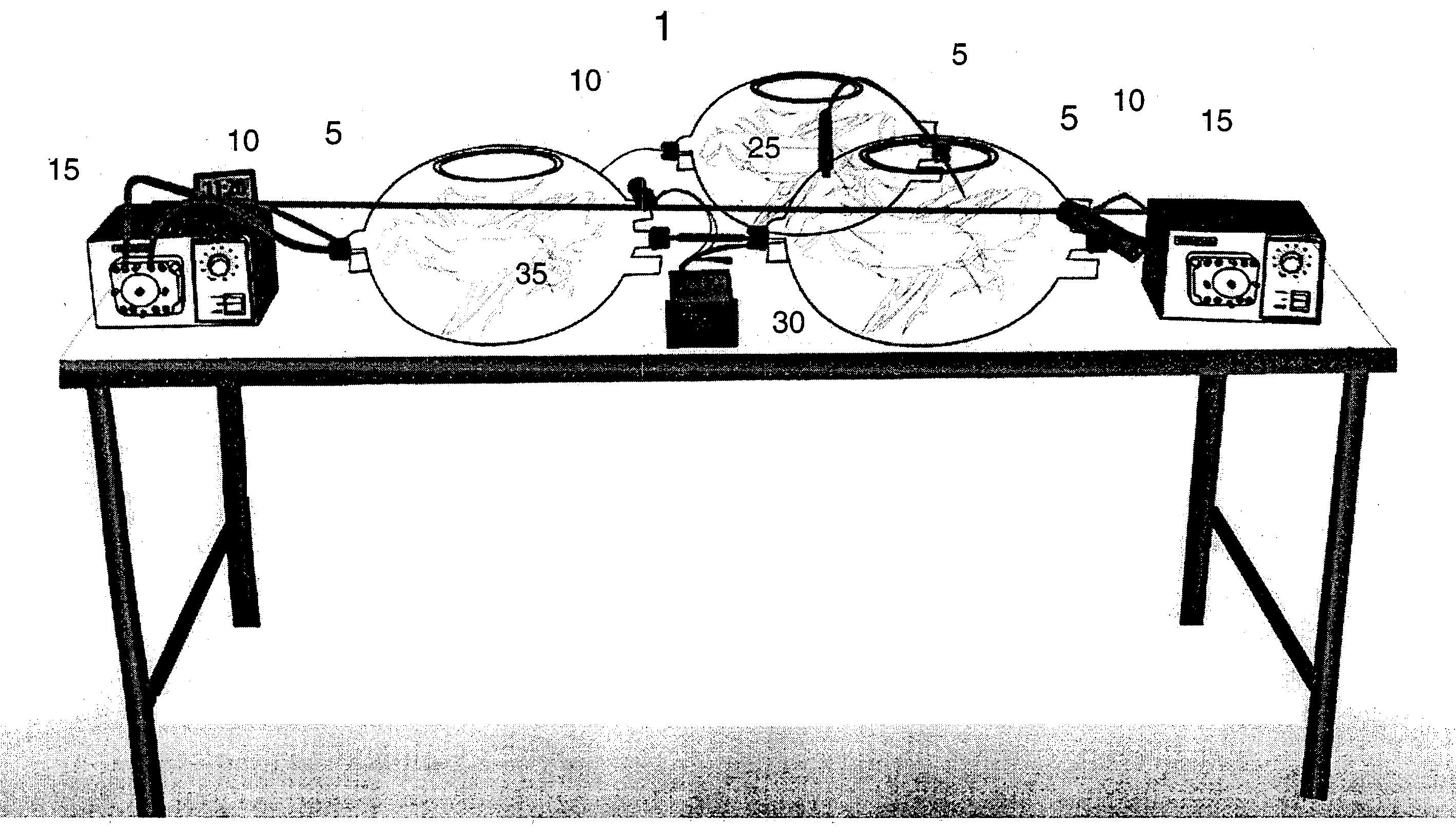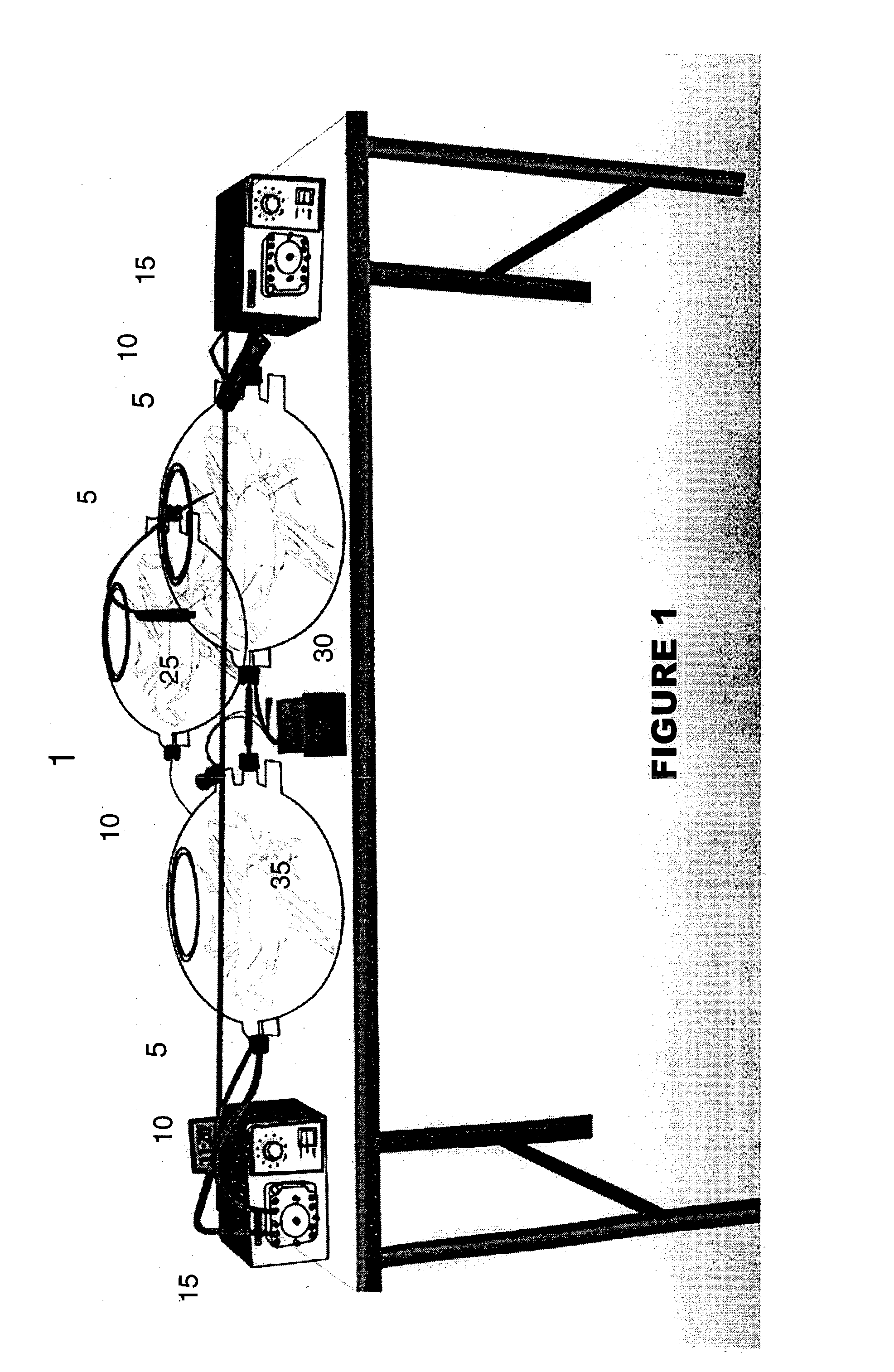Stem cell maturation for all tissue lines
a stem cell and all-cell technology, applied in the field of modified germs, can solve the problems of difficult purification of neuronal stem cells, limitations of adult stem cell plasticity, and limited studies using stem cells derived from bone marrow (i.e. hematopoietic stem cells (hscs), stromal cells and/or endothelial cells) and the brain (i.e. neuroblasts)
- Summary
- Abstract
- Description
- Claims
- Application Information
AI Technical Summary
Benefits of technology
Problems solved by technology
Method used
Image
Examples
example 1
[0046] Isolating the Primordial Sex Cells (PSCs). The mammal or animal is anesthetized and the gonads are removed and transected. The primary sex cells (PSCs) are isolated with the aid of a microscope. Alternatively, a biopsy punch of the gonads can also be used and the PSCs isolated with the aid of a microscope. Under the microscope the PSCs have stem cell morphology (i.e. large, round and smooth) and are mechanically retrieved from the gonads. In particular, the spermatogonia and oogonia, are retrieved from the gonads. In particular, type A and type B spermatogonia are retrieved.
[0047] To obtain an ova / ovum, the animal is superovulated, and at least one ovum is retrieved and placed in nutritive media to keep it viable. The ova is held in place using a micropipette and with another micropipette (i.e. patchman) enter the ova until the tip is adjacent to the ova nucleus. Enucleating the ova is possible by applying a small vacuum to the micropipette. Discard the ova (1n) nucleus. Enuc...
example 2
[0052] Expanding the MGC. Take the MGC and place in a nutritive media comprising at least M15:high glucose DMEM (minus pyruvate and minus glutamine), about 15-20% fetal bovine serum (FBS), 1.times.1-glutamine, 1.times.penicillin / streptomycin, 1.times.non-essential amino acids, 1.times.ribonucleosides, 1.times.b-mercaptoethanol (bME) and 1:1000 leukemia inhibitory factor (LIF). The MGCs are prohibited from aggregating past a certain cell size, for example, the 6-cell stage. Mitotic divisions of the MGC can be observed using a dissecting scope. Although cell aggregates equal to or greater than 10.sup.2 are possible, it is not preferred in the present invention. Also, the MGCs can be expanded on a layer of feeder cells. However, typically the cells are kept in suspension when maintained in the bioreactor chamber. At the 6-cell stage, the MGCs are mechanically separated. Alternatively, a sugar residue that binds to the surface molecules on the membrane of the MGCs will prevent aggregati...
example 3
[0054] The Bioreactor Chamber. FIG. 1 describes an example of one modification of the bioreactor chamber. As mentioned above the bioreactor is comprised of at least one chamber, preferably at least two chambers. The chamber is used to grow, expand, maintain, sustain and mature cells, generally, or in the case of the present invention, MGCs.
[0055] FIG. 1 is an example of a multi-chambered bioreactor 1. The chambers 5 can be limited to one, but preferably there are at least two chambers 5. The chambers 5 are comprised of silicon oxide or glass. However, other materials used to construct similar biological chambers can be used. The chambers 5 are connected by tubing 10 to each other, and further connected by tubing 10 to various ancillary systems including peristaltic pumps 15, micro-oxygenators, CO.sub.2 reserves and molecular sieve filters (not shown in FIG. 1). The tubing 10 is comprised of neoprene or other similar made materials for use in biological systems. The tubing 10 can hav...
PUM
| Property | Measurement | Unit |
|---|---|---|
| Size | aaaaa | aaaaa |
| Volume | aaaaa | aaaaa |
| Permeability | aaaaa | aaaaa |
Abstract
Description
Claims
Application Information
 Login to View More
Login to View More - R&D
- Intellectual Property
- Life Sciences
- Materials
- Tech Scout
- Unparalleled Data Quality
- Higher Quality Content
- 60% Fewer Hallucinations
Browse by: Latest US Patents, China's latest patents, Technical Efficacy Thesaurus, Application Domain, Technology Topic, Popular Technical Reports.
© 2025 PatSnap. All rights reserved.Legal|Privacy policy|Modern Slavery Act Transparency Statement|Sitemap|About US| Contact US: help@patsnap.com


